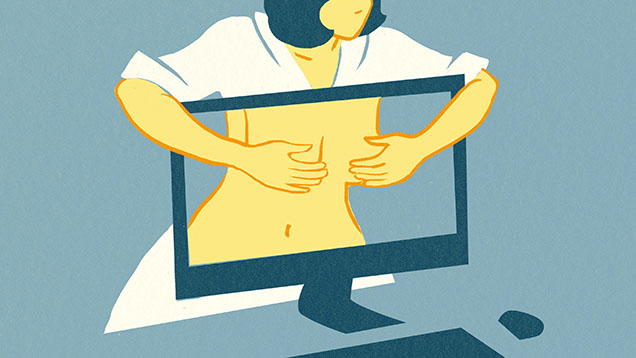If you’ve been conscious at any point during the past 48 hours, you’ve probably heard about the slew of raunchy celeb selfies making their way around the internet. It didn’t have to be that way; despite all appearances, you can keep your naked body off the internet. Here’s how.
1. Don’t take photos of your naked body.
While not really practical advice in this day and age, it’s worth noting that abstinence is the only 100 per cent effective way to avoid photos of your naked body on the internet. Still, we can’t live in fear, and we have a right to take as many naked pictures of our naked selves as we want. So let’s see what other options are out there.
2. If you must take photos of your naked body, don’t put them on the internet.
Encrypt them on your hard drive. Make prints in your own private dark room. Stick to charcoal and passion. There are countless ways for you and your loved ones to bask in your naked glow without uploading photos to the internet. All are still riskier than just not taking photos in the first place (you’ll never know until it’s too late if a jilted ex-lover is particularly vengeful and/or has a 4chan account), but still far safer than what comes next.
If you really must share intimate photos of yourself — and why wouldn’t you, you’re resplendent — here are the best precautionary steps you can take.
3. If you must put them on the internet using a cloud service:
A) Enable two-step verification.
We’ve said it time and time again, but it’s a fact that can’t be stressed enough — set-up two-step verification on anything and everything that offers it. Especially the cloud services you likely upload all your most precious files to.
It’s really the best possible way of protecting yourself against brute force attacks. With two-step, anyone attempting to log into your account from an unknown device will have to enter a code (normally sent to your phone) before gaining access. And fortunately for you, nearly every big internet service out there now offers the highly necessary feature. After all, it’s a safe assumption that if any of the recently hacked celebs had two-step set up, that would be one less name on the list.
B) Encrypt your files before uploading.
This way, even if someone manages to get their hands on your precious, bare-skinned data, they (in most cases) won’t be able to do a damn thing about it. Encrypting a select set of files (in this case, jpegs that showcase your danger zone) is wildly easy, meaning there’s no reason not to do it.
Carlos Danger). But if you were cursed at birth, have taken a vow of Snapchat, or just really like making poor life choices, there are some ways to help yourself.
B) Namely — surprise surprise — two-step verification.
Sorry to repeat ourselves, but seriously. It’s a (usually) mild hassle that can end up saving you a world of hurt. Twitter, Facebook, Tumblr — they all have two-factor, which means there’s no reason for you not to hop on board the safety train.
C) Remember that ephemeral social media isn’t quite as fleeting as it sounds.
Snapchats are never really gone, and of course, there’s always the possibility that someone could take a screenshot of your snap. Not to mention the slew of potentially creepy apps that let you open Snapchats without ever telling the sender. Just say no to Snapchat sexting and its ilk. It’s not nearly as safe as it wants you to think.
5. If you have an iPhone, just deleting the photo from your phone isn’t enough.
It may seem convenient to have your photos automatically sent to the cloud above any time you snap a pic, but that same convenience can come back to bite you. As Jérôme Segura, a senior security researcher at Malwarebytes, explained to us over email:
Some celebrities thought they had deleted sensitive photos from their Camera Roll and that therefore they should be gone. This shows once again how technology can come back to haunt us. Who hasn’t lost pictures or music because of an automating syncing of their device with a computer or the cloud?
Similarly, the non-obtrusive back up system kept pictures in people’s Photo Stream, a separate collection that is synced across multiple devices. For many, deleting the pictures from there as well and forcing another sync on a clean backup may not have been obvious.
6. If it’s already out there, you’ve got options.
The worst has happened, some corner of the internet is plastered with your unattired form, and you want it gone. Unfortunately, at this point, you’re probably never going to be able to wipe the image from the internet entirely. But you can minimize the damages.
If you wind up on an actual porn site, they will generally be good about taking down photos as requested. And if you end up somewhere less friendly (i.e. revenge porn websites) the Digital Millennium Copyright Act is at your service. There are even places that will do the leg work for you, like End Revenge Porn, though you can always just head straight to the DMCA’s website to request the takedown yourself.
And if all that still doesn’t work, the police will be ready to step in if needed. All of which, while occasionally necessary, is a huge hassle. So if you decide to snap some nude selfies to share with whomever your heart desires, go right ahead — just make sure to protect your saucy pics ahead of time. Because that is one hard mess to clean up.
Picture: Tara Jacoby
